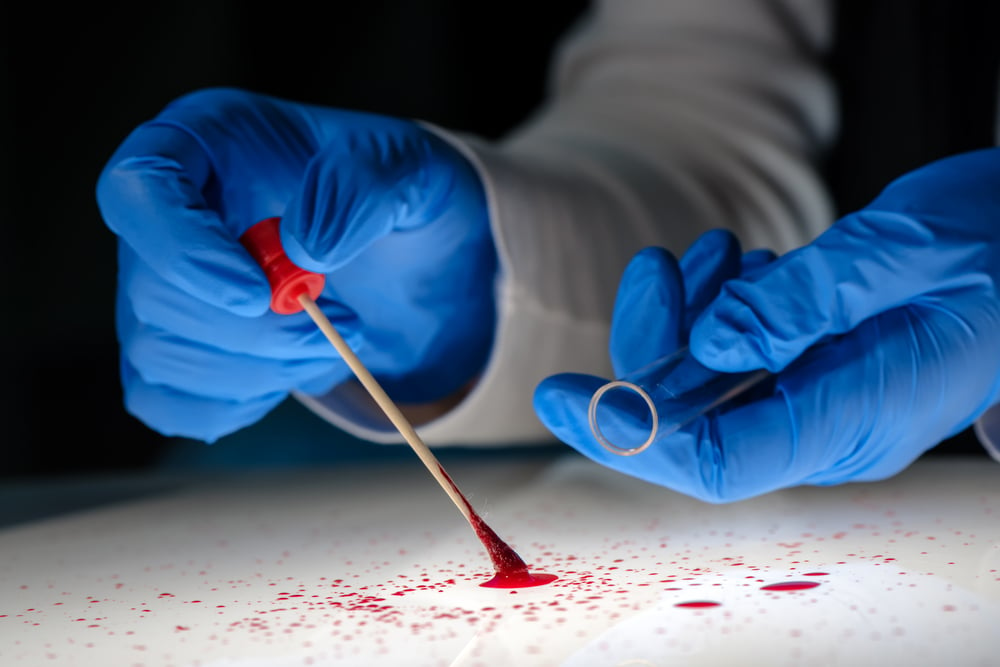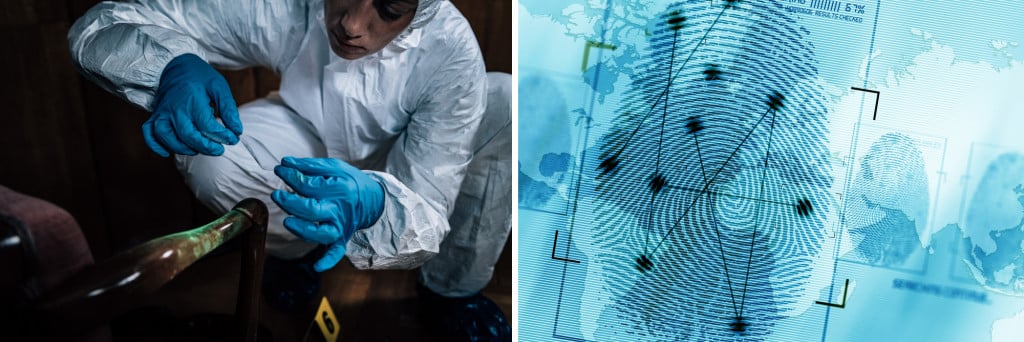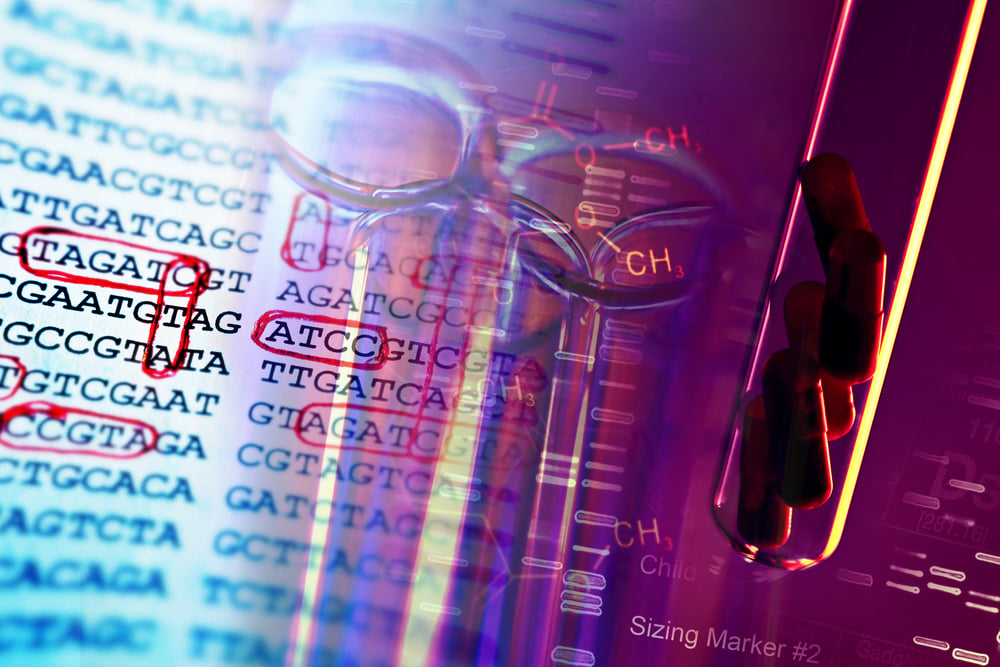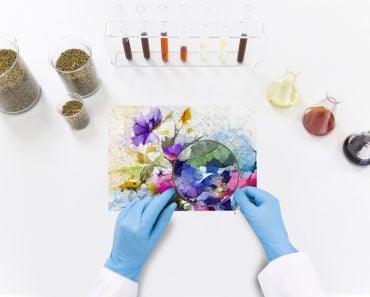Table of Contents (click to expand)
Every contact leaves a trace and forensic science uses these traces to make sense of the evidence left behind at a crime scene.
The entire world seems to love investigative shows and movies; popular culture loves to portray intelligent detectives who solve complicated crimes based on evidence and the art of deduction—and obviously nab culprits!
But how much do we know about what happens in actual investigative procedures, especially the more scientific aspects? In this article, we will uncover how real-life forensic experts use the power of science to solve crimes.
Before we get into the details, let’s briefly talk about forensics itself.
Recommended Video for you:
What Is Forensic Science?
Well, there is no one definition for forensics, but it generally means the use of science and reasoning to resolve legal disputes. It involves the art of collecting, preserving, and processing evidence using scientific methods to make sense of it.

This might be shocking, but the evidence-based criminal justice system that we know today isn’t that old. For a very long time, humans declared people guilty of a crime due to their race, gender, class, or simply being at the wrong place at the wrong time.
The modern science of forensics began to flourish in the late 1800s when a French scientist named Edmond Locard, an admirer of Arthur Conan Doyle’s Sherlock Holmes, began to explore the ways science could help in criminal investigations. He came up with one of the basic principles of forensic science, which is “Every contact leaves a trace.”
This means that whenever a crime is committed, the perpetrator leaves behind a trace of their presence, whether that is in the form of blood, fingerprints, hair, or even soil. In the same way, a criminal also carries several pieces and traces from the crime scene along with them. These trace shreds of evidence from both sides can help investigators solve a mystery.
And where does one find this evidence? At the crime scene!
Crime Scene Investigators And Forensic Scientists
Crime unfortunately comes in many shapes and forms; it could be a homicide, burglary, fire, or drunk driving, among many others. In every case, the crime scene is a silent witness that must be protected. A pristine scene is critical for tracing the space back to the origin of the crime.
So, first and foremost, as soon as the authorities reach the scene of the disturbance, they cordon off the area with that familiar bright-yellow tape and set up a video feed to keep a record of any person leaving or entering.

After the scene is secured, crime scene investigators or CSIs enter the scene dressed in their head-to-toe protective gear and nitrile gloved hands to prevent any cross-contamination. They scan the surroundings with the utmost detail in search of evidence.
Now, evidence comes in two types. The first is direct evidence, like audio or CCTV footage of a crime or an eyewitness, whereas the second is circumstantial evidence, which is what forensics deals with. The CSIs at the scene carefully collect physical evidence, such as fingerprints, weapons, and suspicious substances, along with biological evidence like blood, hair, or bodily fluids.
The collected evidence is then placed in clear and labelled plastic bags or sterile vials and handed over to the person in charge. Depending on the type of evidence that must be processed, the samples are sent to specific forensic labs of experts, which is where forensic scientists come into the picture.

Unlike TV shows, where the same person goes out to the field and conducts all the forensic tests required, forensic scientists specialize in very narrow topics. Some scientists only study the DNA or fingerprints, while others only study poisonous substances or insects that may be found at the crime scene.
Now, that we have a basic understanding of our CSIs and Forensic experts, let’s find out how they deal with different types of evidence.
Blood

Imagine a case where the police get a tip on a missing woman from her neighbors. They mention hearing a loud argument and a shriek in the dead of night before she disappeared. The police have already searched the house to find clues, but now they suspect physical harm or even murder.
They search the house again and find it to have no blood, but there is a high chance that someone must have washed it.
To clear their doubts the CSIs use a solution called luminol. The Luminol solution reacts with the iron present in our blood’s hemoglobin and gives rise to a faint blue glow due to a phenomenon called “chemiluminescence”. This solution reacts with blood even at a very low concentration (parts per million). Luminol can also be used in the presence of bodily fluids, which could help with DNA analysis.
Washing away the blood with bleach also doesn’t escape luminol, as it reacts with the bleach and leaves a blue hue in the region where bleach was used.

Once blood is found at a scene, the next step is to establish who was present at the crime scene. This could be done by interrogating people associated with the case, but in this situation, the woman lived alone, with authorities looking for trace evidence like fingerprints.
Fingerprints

Fingerprints come in three types: 1) Patent Fingerprints are ones that are visible to the naked eye, i.e., a finger soaked in blood; 2) Plastic Fingerprints left on soft surfaces like soft wax or wet paint; and 3) Latent Fingerprints, which are invisible fingerprints created by skin secretions like sweat or oils and require chemicals to them visible.
The most basic method that is used to enhance fingerprints from smooth surfaces is the trusty brush and fingerprint powder. On dark surfaces, light-colored aluminum or zinc powders work, and on the light surfaces, dark carbon-based powders are used to enhance the fingerprints.

In the case of porous surfaces, fingerprints can be detected using a solution called ninhydrin. This solution reacts with amino acids present in sweat and turns purple due to the formation of Ruhemman’s purple. Sometimes CSIs also cyanoacrylate or super glue fumes are directed towards an area where fingerprints could be present. These cyanoacrylate molecules react with residue left by the skin to create a 3D fingerprint matrix.
Once the clear fingerprints have been found, they are photographed or lifted off using a clear sticky tape transferred to clear acetate film and sent to forensic labs for analysis.
The fingerprint experts then run programs for hours, not minutes as we are used to seeing in movies. The prints are cross-referenced with the fingerprints available on national, local, or employment databases. Once the software provides a few matches, the analyst must then analyze the different arches, grooves, and bumps in the fingerprint and identify multiple points of comparison (there is no fixed number) to conclude whose fingerprint it is.

Now back to our case… after analysis, it was found that the fingerprints belonged to the woman’s estranged partner. However, the fingerprint analysis only proves that a certain person was present at the crime scene, but doesn’t confirm that they committed it. A few days after the assault/ homicide investigation was launched, the team that had been searching for the woman found her body dumped deep in a nearby forest.
Now, if the detectives find some solid evidence, like the DNA of the assailant on the victim, it might help them narrow down their suspicions.
So, in the new crime scene, which is now the forest, CSIs first scour the surroundings and look at the body carefully, in search of weaponry, hair, skin, nails, blood, or any bodily fluid. At this point, the CSI would send them to a forensic lab for DNA analysis.
Forensic DNA Analysis

We know that every individual has visibly unique fingerprints, but that’s not the case with DNA. Of the 3 billion DNA molecules in our body, we share 99.9% of DNA with other humans, since these are responsible for coding the fundamental proteins essential for our survival. The only aspect that’s unique to us is the 3 million or so non-coding DNA.
Back in the lab, the preparation of DNA profiling begins with extracting the DNA from the evidence samples. These samples often do not have enough DNA to carry out multiple tests, so scientists use a Polymerase chain reaction or PCR machine that replicates the available DNA sample to increase its total amount.
Polymerase chain reaction
Next, the DNA samples are put through STR or Short Tandem Repeats analysis, where the focus lies on very specific sections inside the junk DNA. Scientists try to find the number of short repeating patterns of the C, G, A, and T base pairs present in a particular DNA sequence.
For example, we take two different STR spots for the same DNA strand for 4 different samples and try to find the number of AGAT repeats in each of them. The first sample has 6 six repeats at spot one and 12 repeats at spot 2; the second has 7 and 8, while the third one has 2 and 8. These patterns differ from one person to another and can help us distinguish one DNA profile from another.

After running STR analysis on the blood, hair, and skin cells the scientists have found two DNA samples of two different people, cross-referencing shows that one set belonged to the victim, so the other must be from the suspect! If the STR results of the DNA sample from the suspect are tallied and matched with that found in evidence, the police can finally prove that the suspect was near the victim when she was attacked.
Conclusion
So doesn’t that confirm that the estranged partner is the murderer, just as it would in a Crime Drama? Well, forensic evidence isn’t always the cast-iron proof we assume it to be. Most of us leave a lot of our DNA where ever we stand, sit or touch, and unfortunately, if a crime is committed at that place and forensic evidence is used as the ultimate proof, many innocent people might end up being incriminated. This is why forensic results are interpreted with caution in a court of law.
There is no denying that forensic science helps provide justice for innocent and guilty people alike. There is no escaping from the eyes of forensic science; it can untangle the puzzling shreds of evidence, materialize molecular clues, and even detect invisible traces left behind at the scene of a crime.
References (click to expand)
- The Role of Chemistry in Processing Crime Scenes. medipharmsai.com
- (2016). Crime Scene Chemistry: Fingerprint Analysis. American Scientist. Sigma Xi.
- Forensic DNA analysis: a primer for courts - Royal Society. The Royal Society
- What Is STR Analysis? - National Institute of Justice. The National Institute of Justice
- Crime Scene Chemistry – Luminol, Blood & Horseradish. Compound Interest












